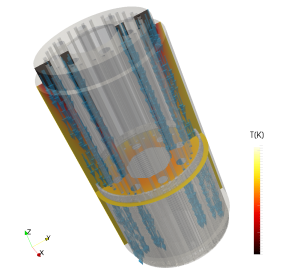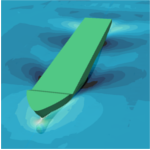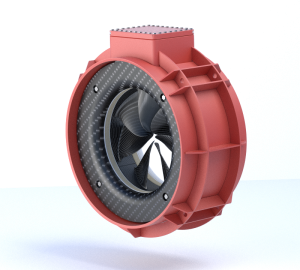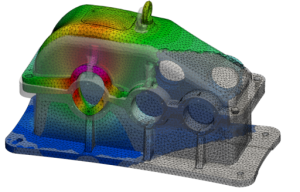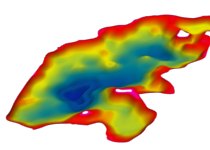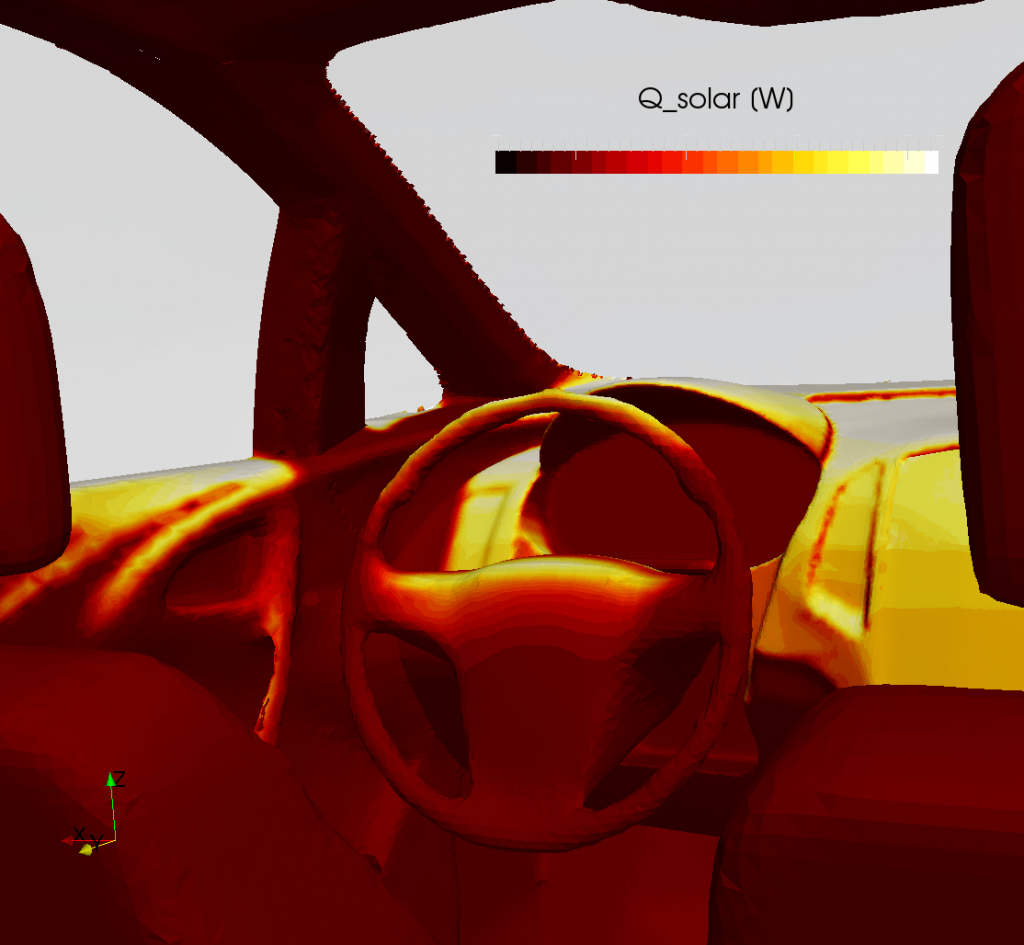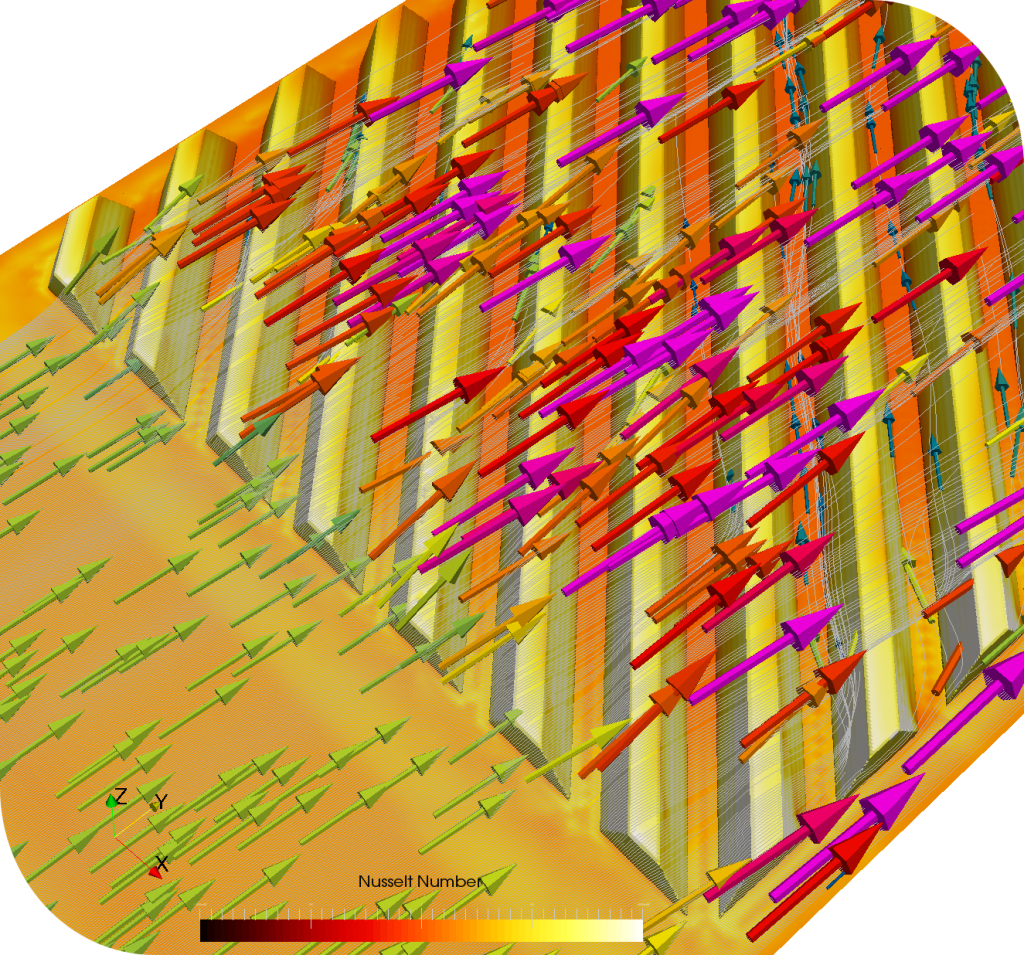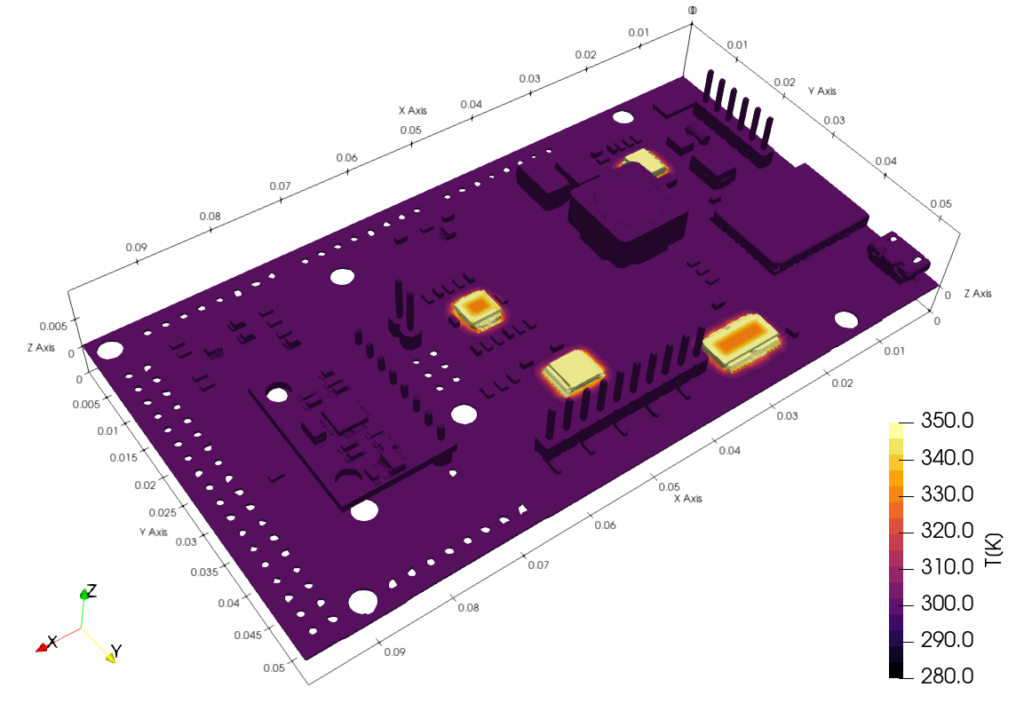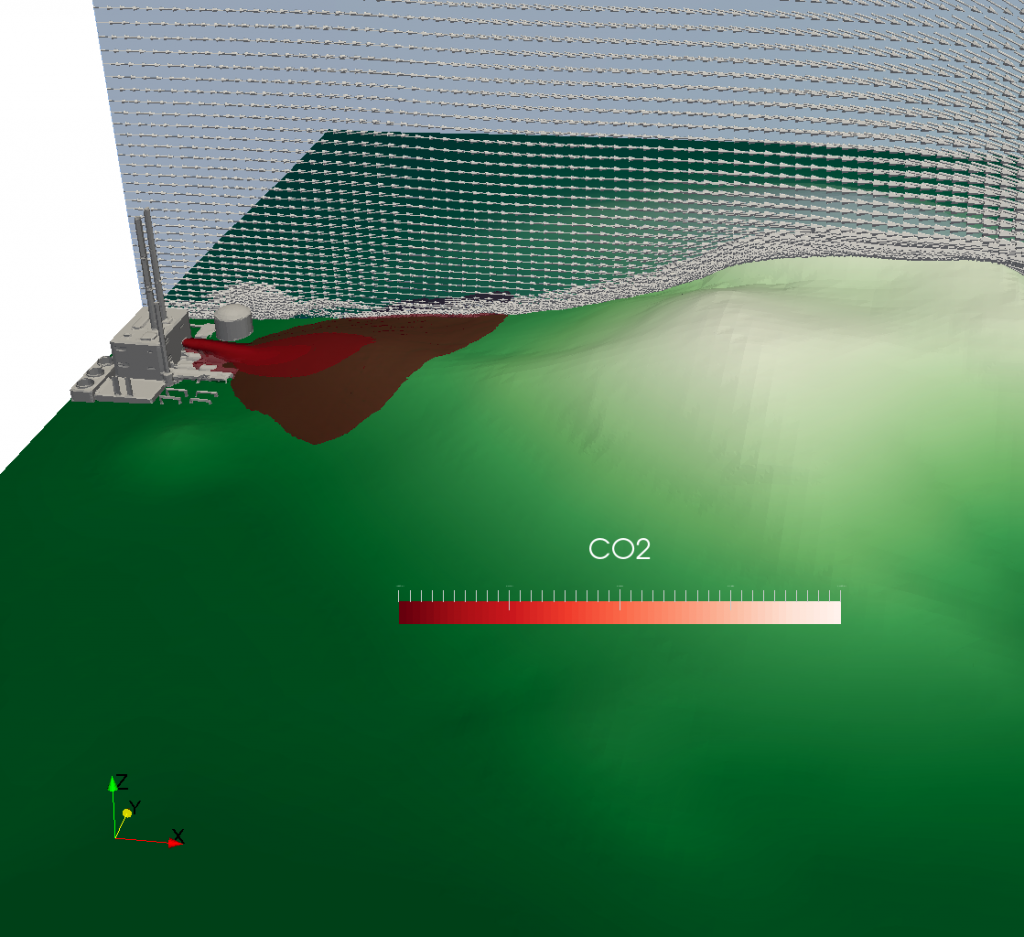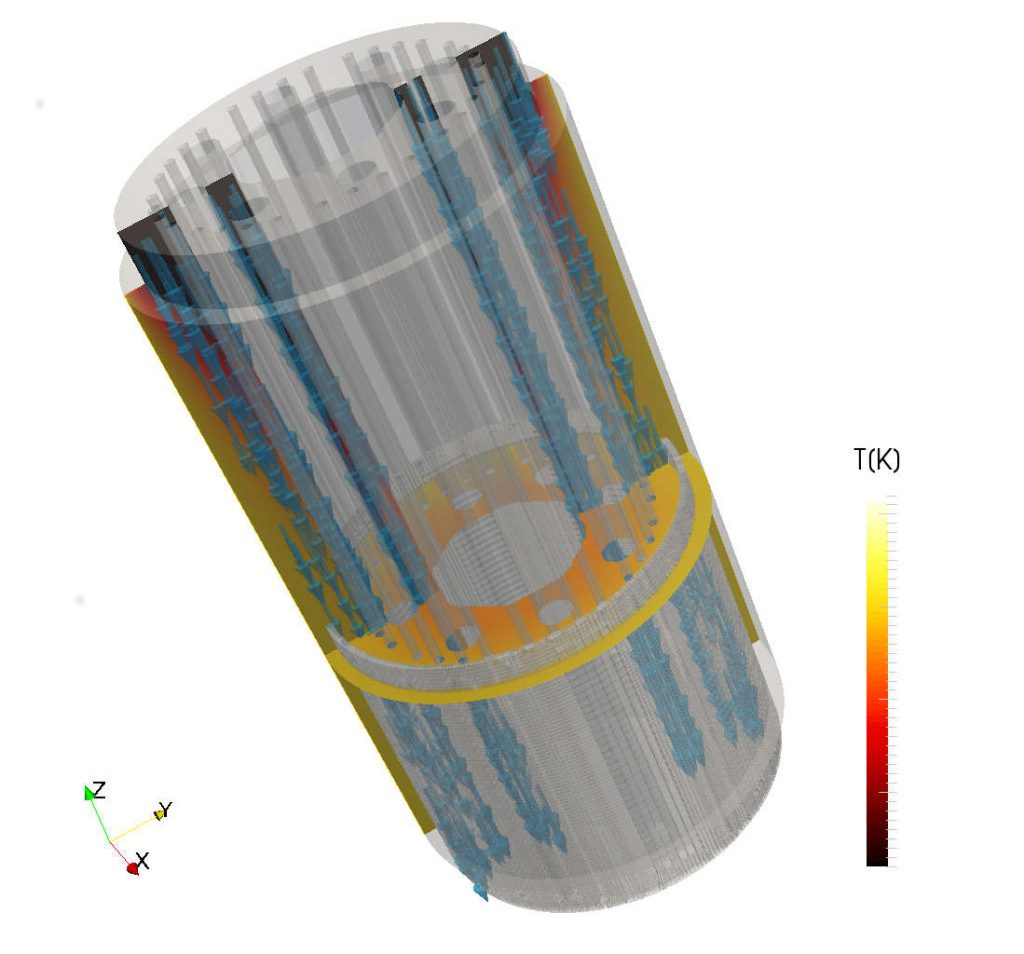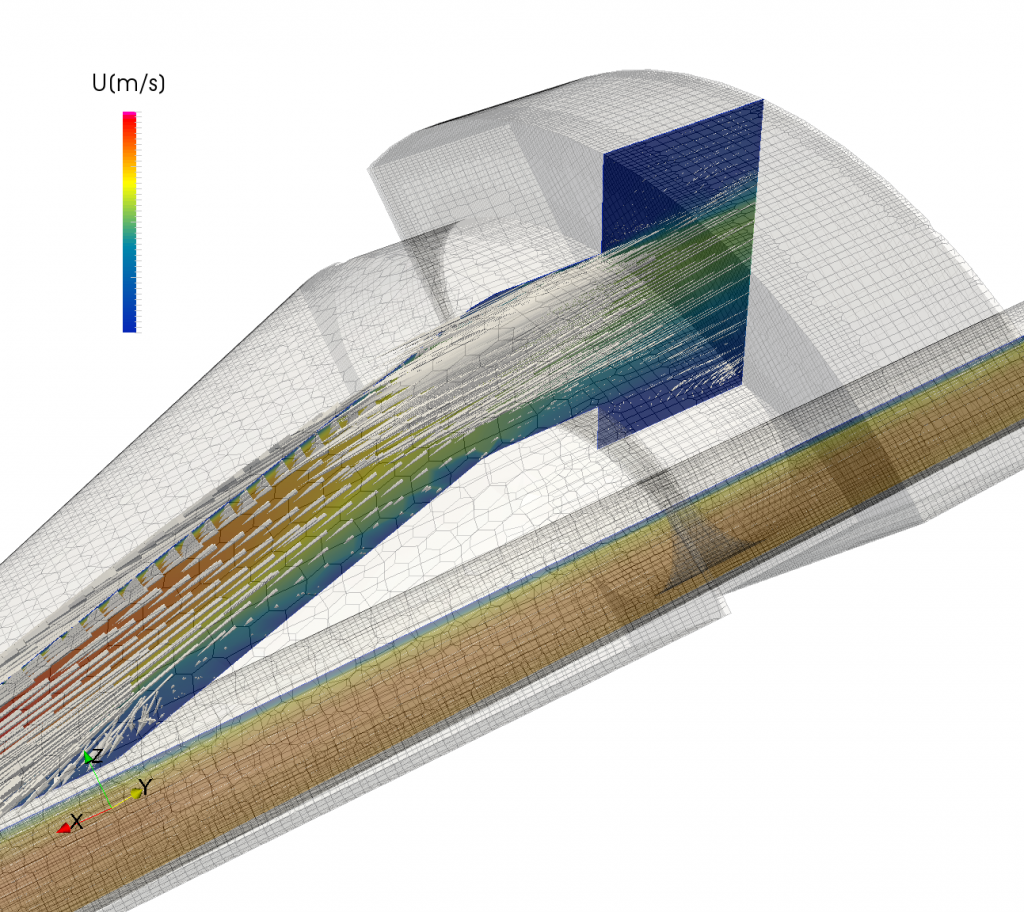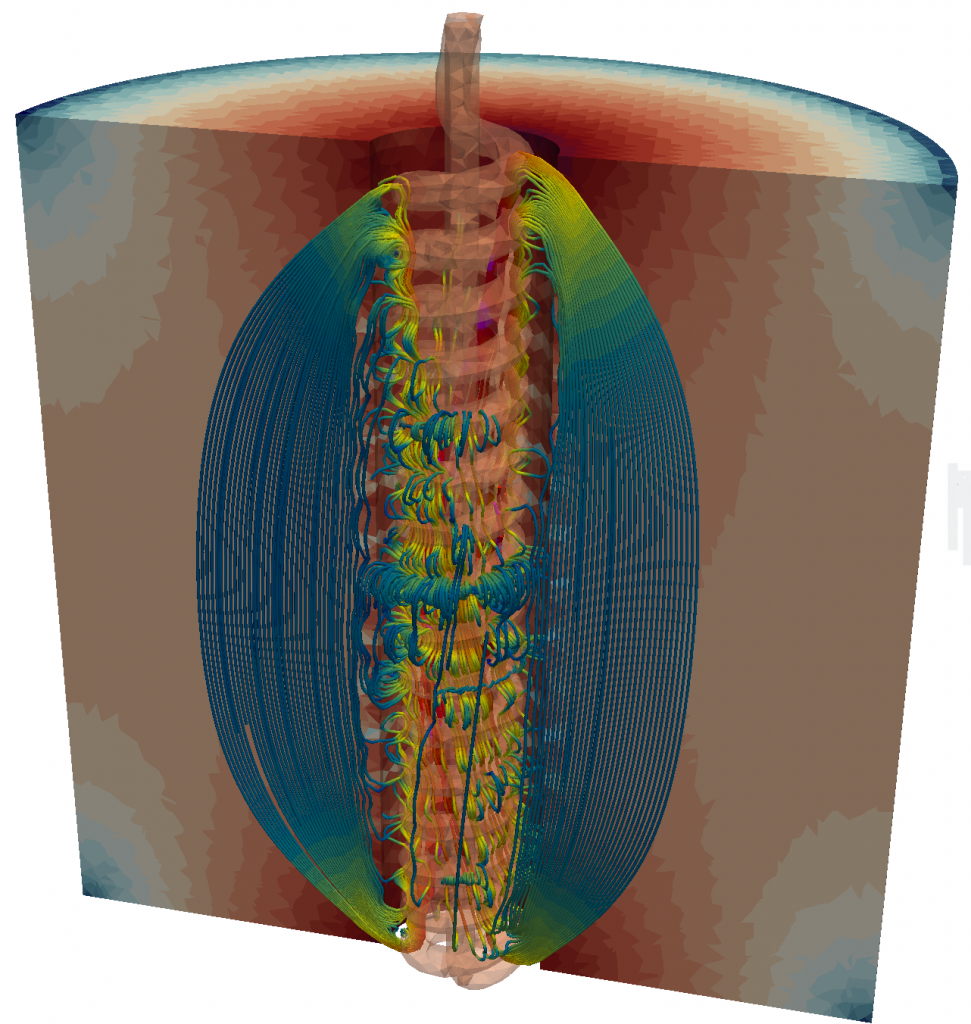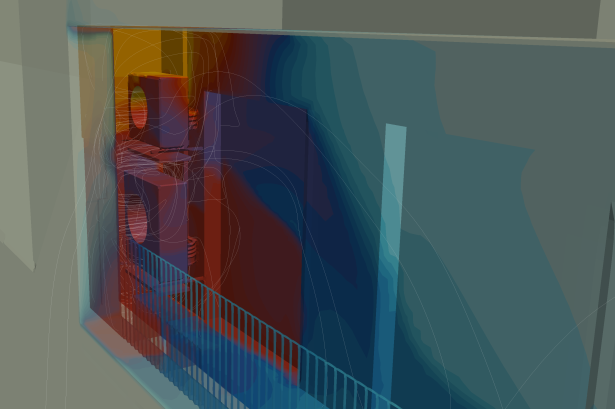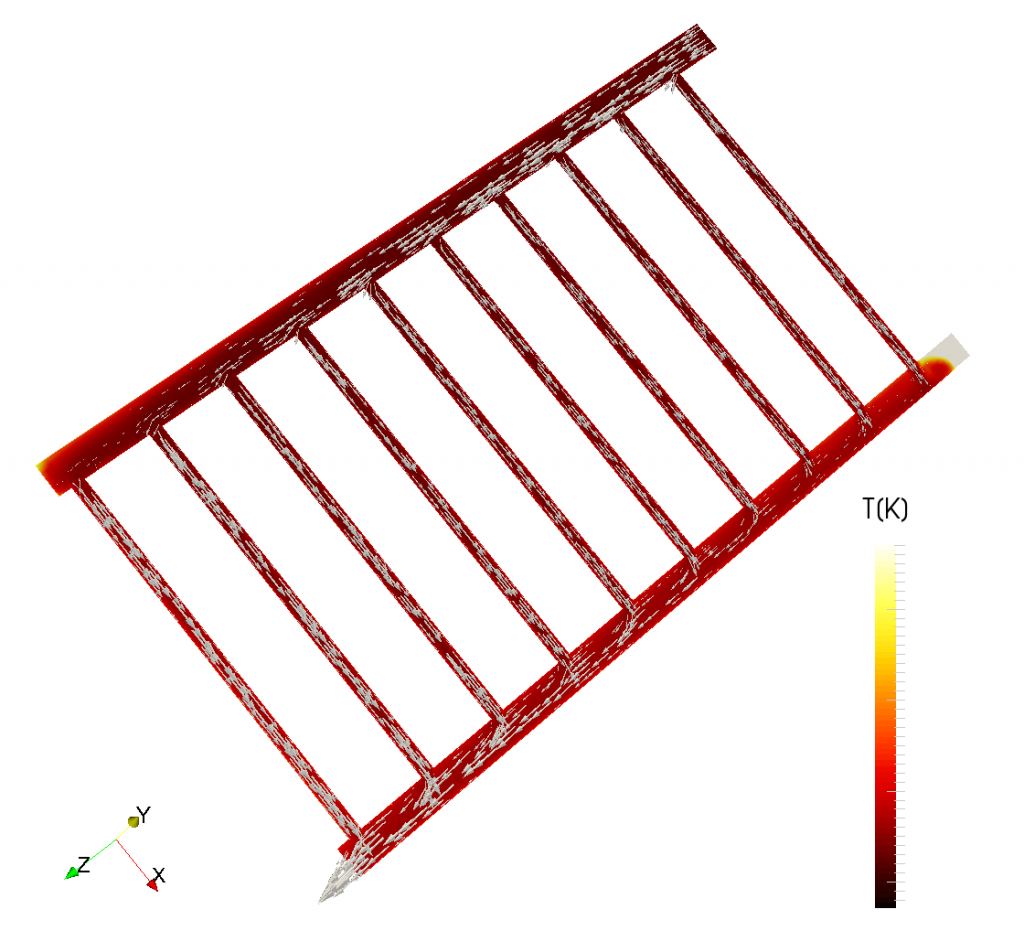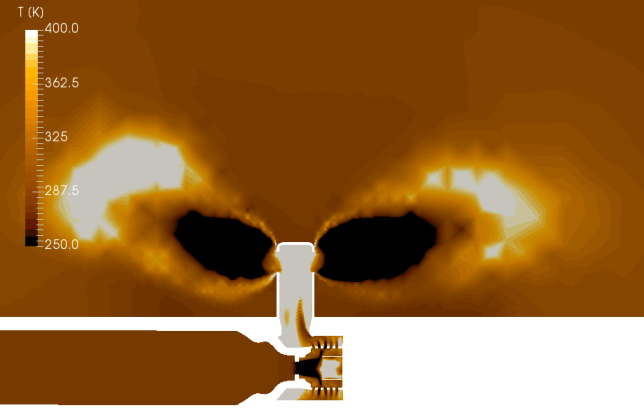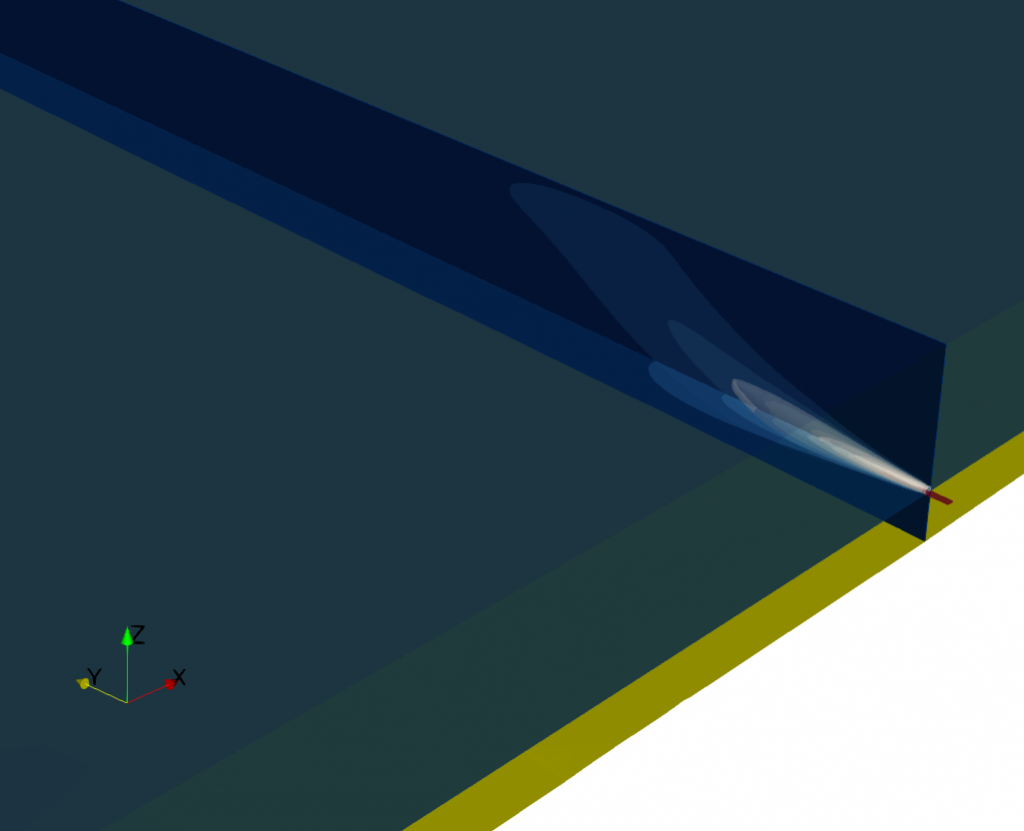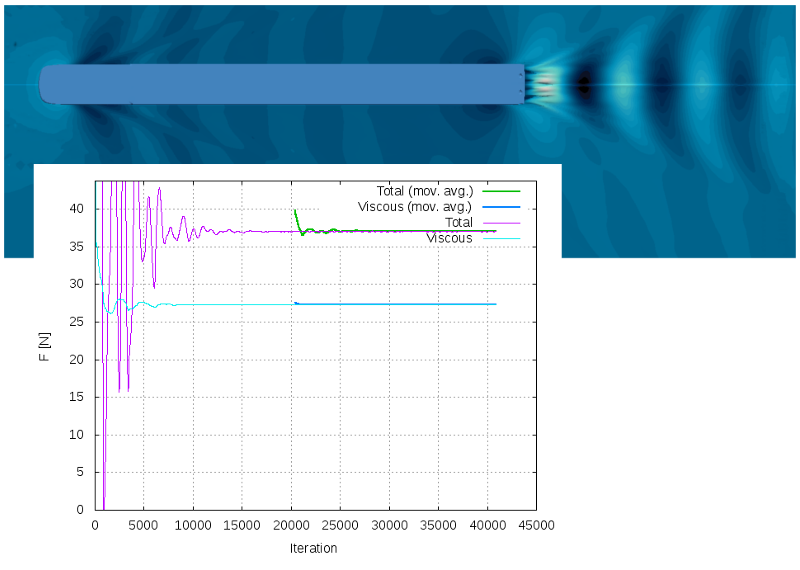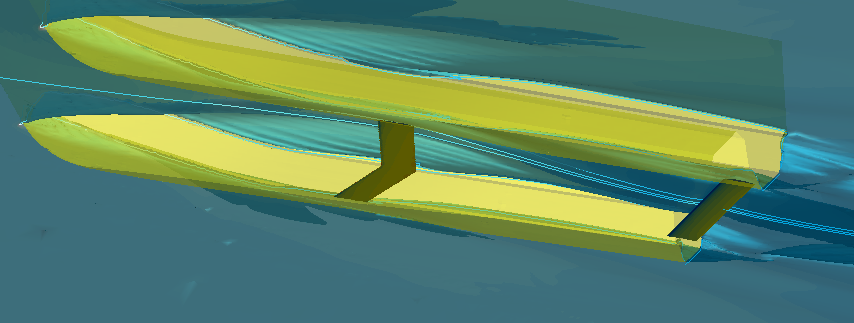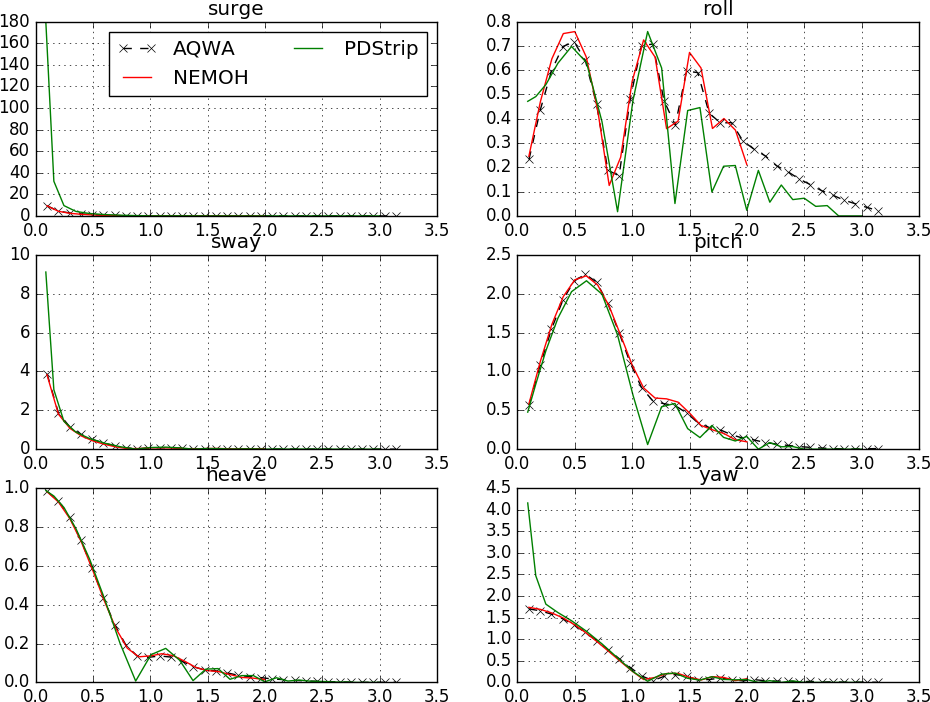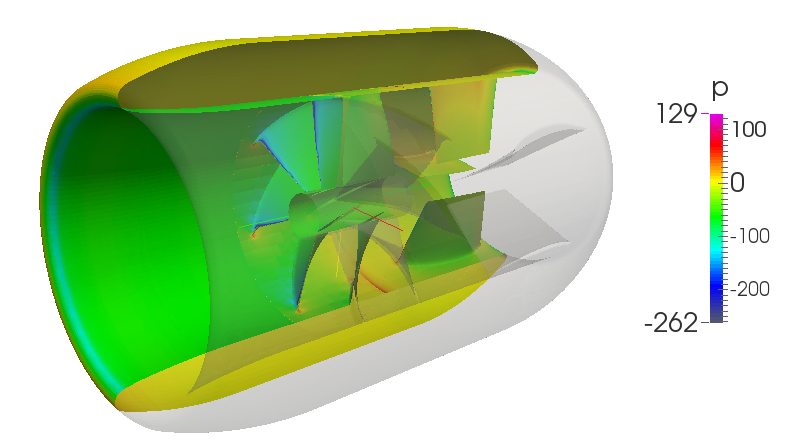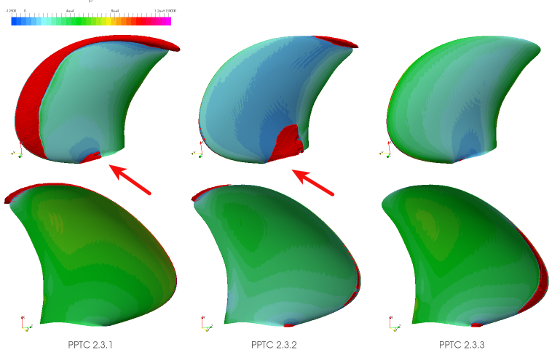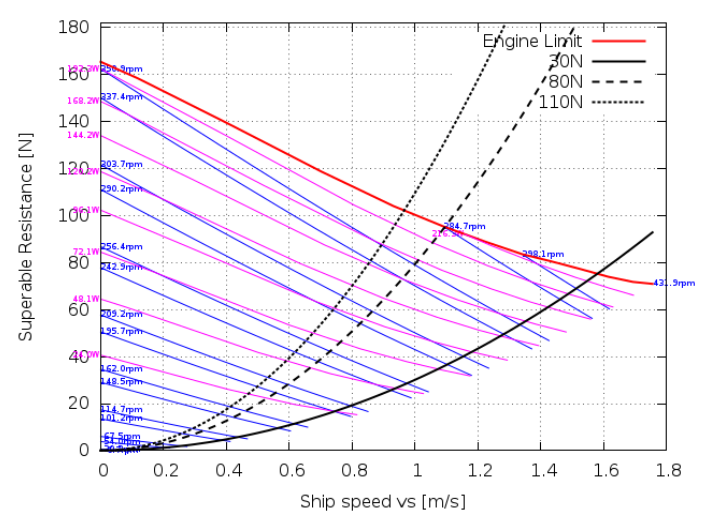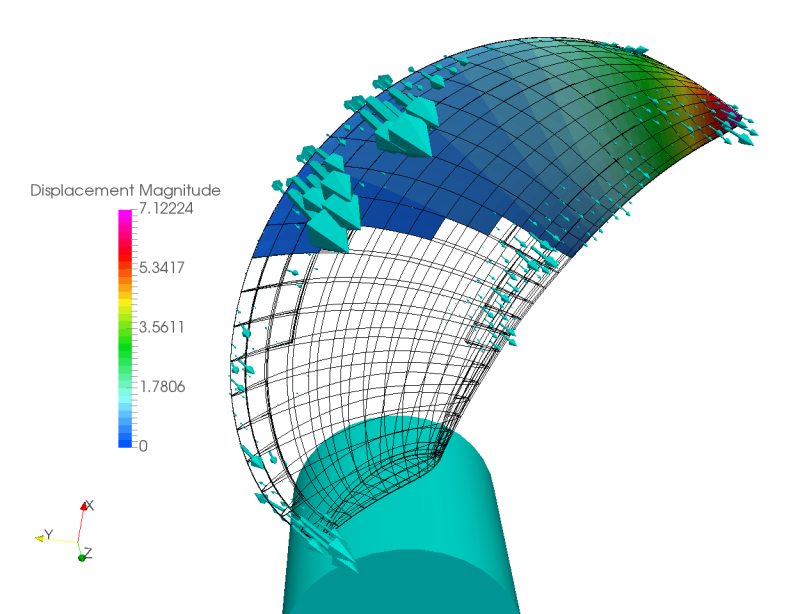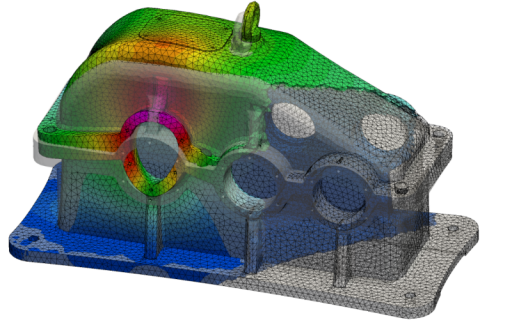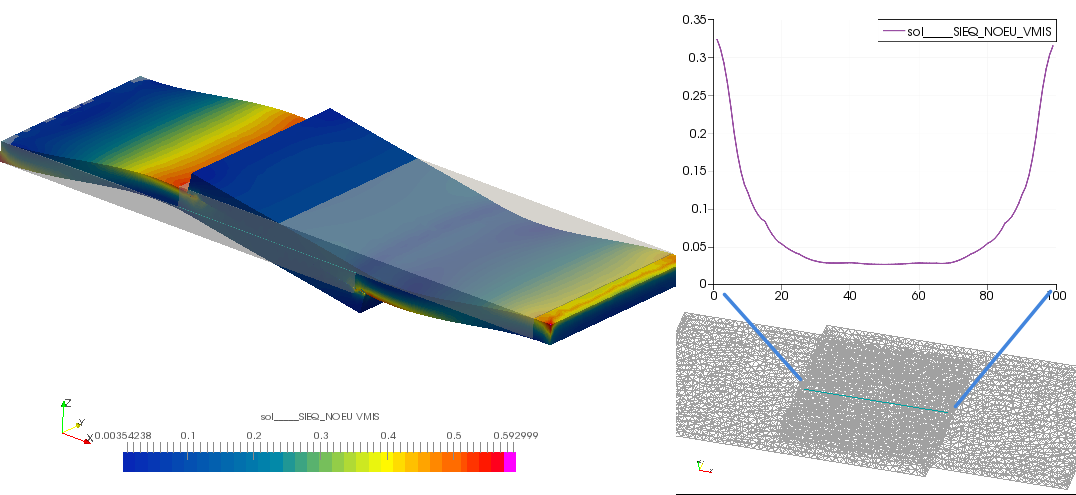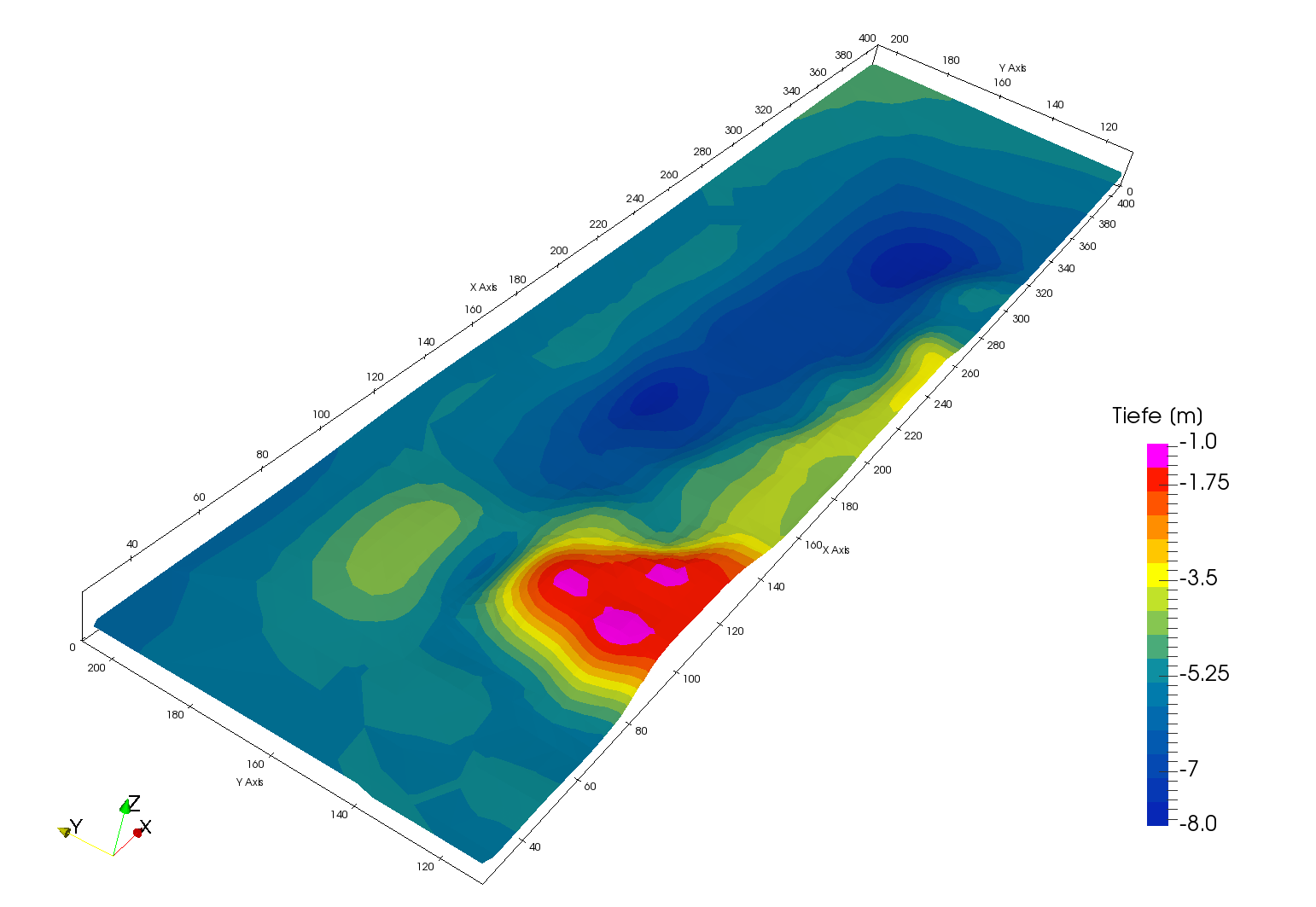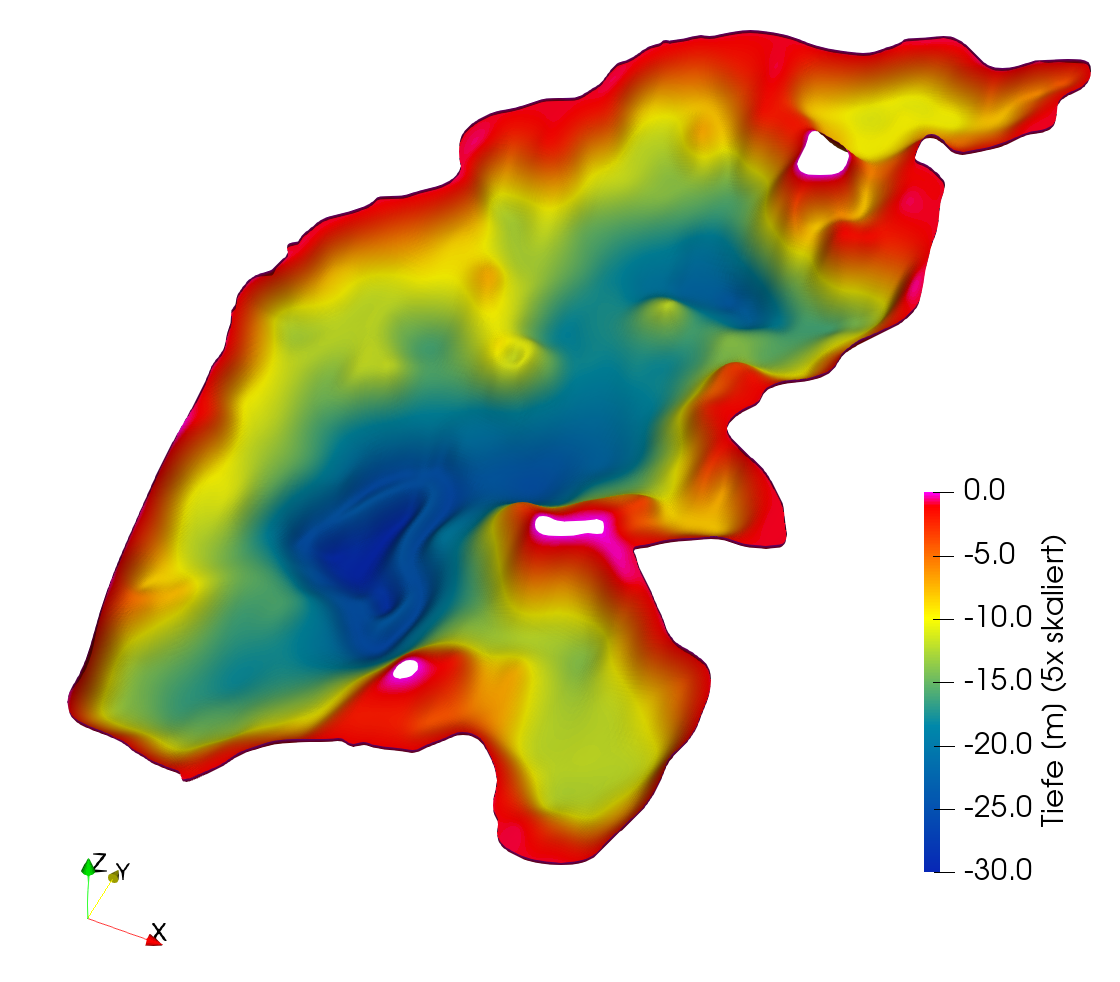Since more than 10 years, we combine work on customer projects with development of our simulation toolkit InsightCAE for simulation automation. Especially in these fields:

Thermal Simulations
A reduction in energy consumption for air conditioning is possible through efficient and controlled ventilation. The coupled simulation (heat radiation, conduction, convection) is used to calculate the temperatures caused by solar radiation in the vehicle and its surfaces. Optimized software (InsightCAE) for solving the transient heat radiation using CFD, taking into account the heat capacities, enables fast and efficient simulations for the client.
The analysis of the flow with heat transfer at various operating points of technical components is the most important step in design and optimization. We have mastered the simulation tools required for this. Improved inflow and outflow and better flow control with minimal pressure losses reduce component and operating costs. Predictions about local thermal stresses can be derived from the 3D simulations.
3D simulations are used to thermally analyze the cooling of various components (electronics, light sources). With the quantification of heat radiation and heat conduction as well as free and forced convection for various cooling concepts, functionality is already guaranteed during the development process. You can find more information in our Blog
Gases escaping in the event of an incident (light, heavy) are assessed using CFD, taking into account the nearby and distant environment. Stationary and transient concentration fields show the critical dispersion and its influence at different wind directions. The use of specially developed transient inflow boundary conditions in atmospheric boundary layers enables high reliability of the simulation results.
Stationary and transient 3D simulation of heat propagation in complex components made of different materials. Cooling and heating of components to determine critical heat flows, required cooling loads or e.g. avoidance of thermal stresses. Optimization of component geometries through automated geometry creation and simulation processes.
Simulation of temperature distribution and air conditioning of rooms and halls. Visualization of thermal bridges, overheating under the influence of wind direction and solar radiation as well as ensuring room and hall ventilation through targeted optimization of ventilation by means of numerical simulation.
For the propagation of compressible flows with compression shocks in technical components. The influence of compression or expansion, the use of special gases and their equations of state as well as the influence of external cooling and heating on the heat propagation can be simulated stationary and transient.
Preparation and case setup for thermal simulation with open source software such as OpenFoam, Elmer, etc. Our InsightCAE software enables fast and automated pre- and post-processing for a robust simulation of heat propagation. Installation of the InsightCAE software including OpenFOAM on Windows and Linux computers, implementation of software add-ons, provision of computing resources (HPC) and support ensure fast and reliable simulation results.

Ship Hydrodynamics
With our InsightCAE framework, we offer a fully automated ship resistance calculation using open source CFD software only. Not only are the costs for software licenses eliminated, but even users with little specialist knowledge can carry out the rather complicated CFD analyses thanks to the automation.
The analysis of the sea keeping is performed using potential codes. It includes the calculation of response amplitude operators (RAOs) for all degrees of freedom. These RAOs are used to calculate accelerations, velocities, motion sickness and other parameters at different locations.
The simulations are carried out with the open source tools PDstrip or NEMOH. The required input is compatible with the input for the ship resistance analysis.
Virtual Towing Tank - We also carry out simulations with our programs on your behalf. Please take a look at our price list, to find out the costs.

Turbomachinery and Propellers
We perform basic performance analysis and design of turbomachinery using state-of-the-art CFD methods. The entire analysis workflow is fully automated in the InsightCAE framework and uses only open source software. This enables very cost-effective simulations, short turnaround times and easy integration into automated optimization frameworks.
After determining a propeller open water curve using CFD or another calculation method, further analysis, e.g. propulsion analysis, is required to predict the propulsion performance for a specific vessel. We have developed analysis software solutions for seamless integration into the design process, relying exclusively on open source software.
Propellers with blades made of fiber composite materials (e.g. CFRP or GFRP) are flexible. When designing them, the deformation of the blades under operating load must be taken into account. We have developed a software solution to carry out the necessary CFD simulations with fluid-structure coupling using OpenFOAM and Code_Aster.

Structural Strength Analysis
Propeller blades made of carbon fiber reinforced plastics are massive composite structures with large thickness. We have developed solutions for the efficient meshing and creation of FEM models required for the fluid-structure coupling of these propellers as well as adapted formulations for strength assessment and failure criteria.

Hydrology
Utilization of a harbor basin for cooling and heating office buildings.
- Thermal simulation to determine the influence of temperature
- Design of the supply and return lines on the quay to prevent short circuits
- Variation of the number of inlets and outlets to avoid high flow velocities
- Dimensioning of the intake boxes to prevent fish from being drawn in
- Biological compatibility
Thermal flow simulation for spatial energy planning
- Lake waters offer a huge energy store that can be used efficiently, ecologically and economically
- Flow simulations create a basis for planning in order to determine the basic conditions and requirements for sustainable thermal utilization.
- Clarification of the expected thermal and fluid mechanical conditions in the water body for authorities / planners / energy suppliers
- Digitization of the depth maps into a 3D model
- Simulation shows the temperature stratification with supply and return for heating and cooling operation
- Temporal resolution of temperature fluctuations in the water body
- Determination of the areas of influence with variation of supply and return geometry

Open Source Software InsightCAE
Idea
In order to use open source software productively and efficiently for daily tasks, the Automation Framework InsightCAE is provided by silentdynamics.
InsightCAE serves as a framework for the automated execution of analysis procedures. The aim is to provide interfaces to all tools and simulation programs that are required for a specific calculation task.
- Customized CFD/FEM workflows
- No license costs, particularly advantageous for multiple users and parallel HPC applications
- For Linux and Windows systems
- HPC / Cloud support
Our additional service:
- Introduction to the use of the software by organizing training sessions
- Provision of support and contact persons to resolve problems
- Implementation of extensions and automation solutions

Individual open source projects can often only fulfill partial tasks in the analysis process. For complex calculation tasks, a combination of several open source CAE tools is often required.
- Workflows of numerical simulations are often complex and are processed manually:

InsightCAE provides tools to automate these workflows:
- Für wiederkehrende Aufgaben wird die “Best-Practice”-Vorgehensweise implementiert. Der Benutzer braucht nur wenige notwendige Parametern bereitstellen. Eine grafische Benutzeroberfläche (GUI) ermöglicht die Eingabe der Parameter und enthält die Dokumentation.
Software
We mainly use this software:

OpenFOAM is the most comprehensive free computational fluid dynamics program currently available.
It has all the functions necessary for the successful use of CFD. In addition, the source code is completely open and it is completely free of charge. In combination with the good parallel scalability, this opens up great potential for increasing productivity and design reliability while reducing costs at the same time.
The focus of OpenFOAM is on computational fluid dynamics. However, thanks to its open and modular architecture, the software is also ideal for solving other tasks, such as the calculation of electric and magnetic fields. The unlimited customization possibilities of open source software in particular make it ideal for developing highly individual solutions.
Code_Aster ist das Finite-Elemente-Programm von Electricite de France (EDF). Seit 2001 ist es freie Software und steht unter der GPL-Lizenz zur Verfügung.
Im Vergleich mit anderen freien FEM-Codes sticht Code_Aster durch seine umfangreiche Funktionalität heraus. Zusätzlich zum numerischen Löser, der sowohl seriell als und parallelisiert arbeitet, gibt es die Pre- und Postprocessing-Workbench “Salome” für die Bearbeitung und Vernetzung der Modelle und zur Visualisierung der Ergebnisse.
Da Code_Aster für die Berechnung von Kernreaktoren entwickelt und verwendet wird, unterliegt der Code einer umfassenden Qualitätskontrolle.
Die spezielle Software-Architektur von Code_Aster ermöglicht eine weitgehende Automatisierung aller Berechnungsprozesse.
You can find more details in this presentation: ![]()
Documentation
The documentation can be found here: InsightCAE Manual.
The sources of the LaTeX document are found on Github.com: InsightCAE Manual (PDF).
Installation
The installation procedure is described in Handbuch zu InsightCAE im Abschnitt “Obtaining InsightCAE” .
Our Services
We implement automated calculation processes according to your wishes and specifications. We can easily provide and maintain these as add-on modules to InsightCAE,
Thereby
- you speed up your daily work,
- errors due to incorrect operation are avoided,
- complicated tasks can also be carried out by inexperienced colleagues
Some examples of workflows that we have developed for our customers:
Ship Resistance Analysis by CFD
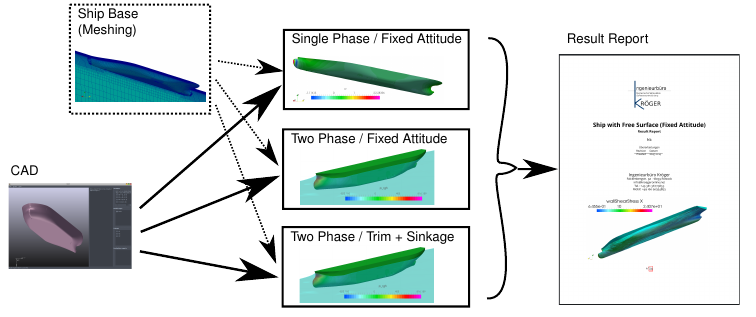
Automated CFD simulations for this application:
- single phase, low Froude number (simpleFoam)
- single phase with approximated free surface (potentialFreeSurfaceFoam)
- two phase (interFoam)
- two phase with solved trim and sinkage (interDyMFoam)
Marine Propeller and Propulsion
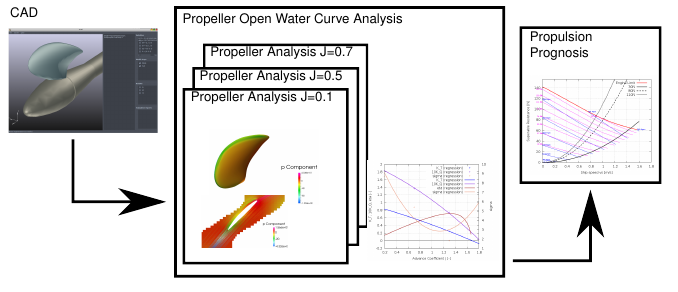
CFD (OpenFOAM) of single operation points and open water curves
- free propeller
- ducted propeller
- axial pump
- optimal diameter, optimal RPM, propulsion prognosis


